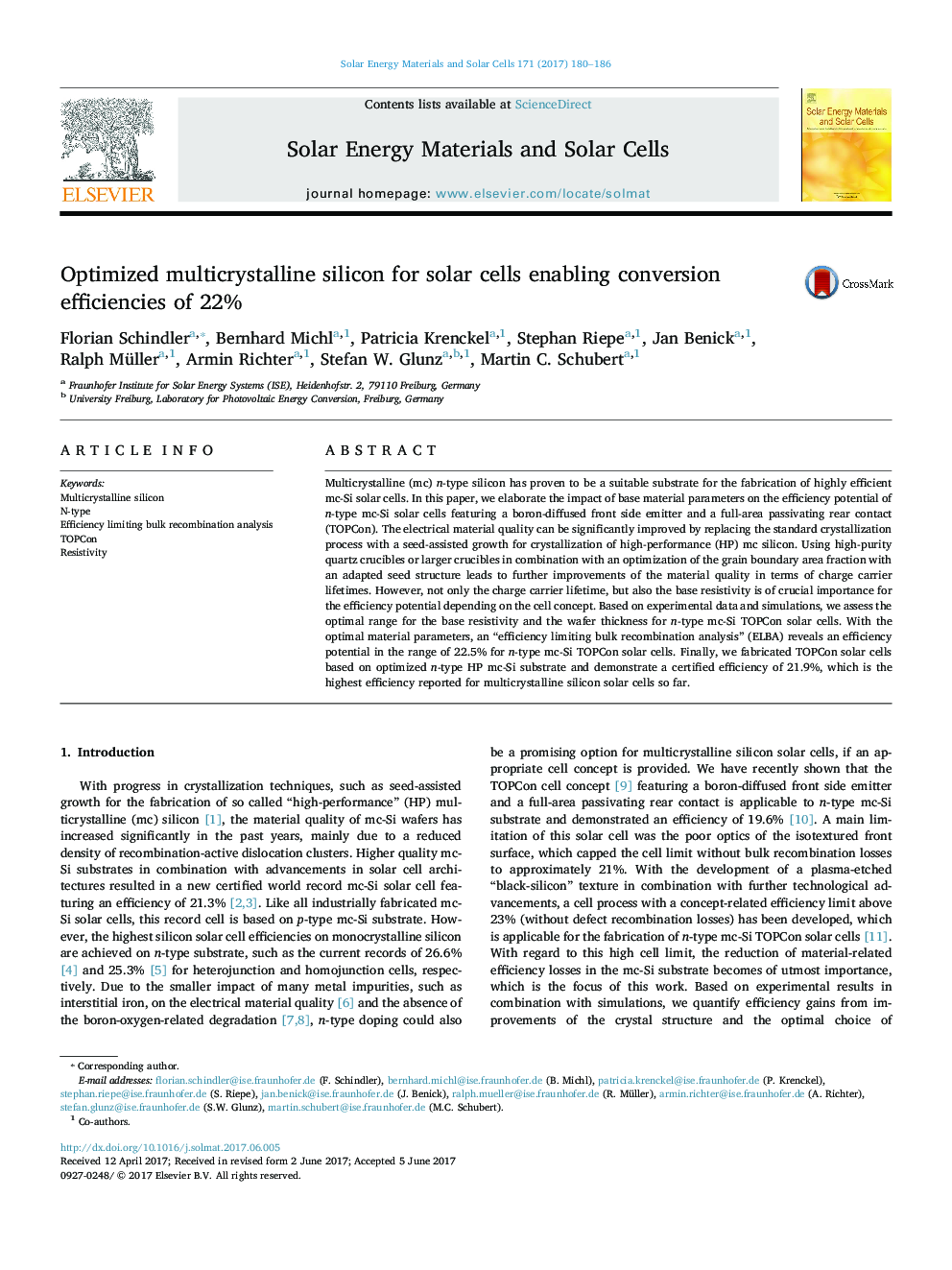| Article ID | Journal | Published Year | Pages | File Type |
|---|---|---|---|---|
| 4758710 | Solar Energy Materials and Solar Cells | 2017 | 7 Pages |
Abstract
Multicrystalline (mc) n-type silicon has proven to be a suitable substrate for the fabrication of highly efficient mc-Si solar cells. In this paper, we elaborate the impact of base material parameters on the efficiency potential of n-type mc-Si solar cells featuring a boron-diffused front side emitter and a full-area passivating rear contact (TOPCon). The electrical material quality can be significantly improved by replacing the standard crystallization process with a seed-assisted growth for crystallization of high-performance (HP) mc silicon. Using high-purity quartz crucibles or larger crucibles in combination with an optimization of the grain boundary area fraction with an adapted seed structure leads to further improvements of the material quality in terms of charge carrier lifetimes. However, not only the charge carrier lifetime, but also the base resistivity is of crucial importance for the efficiency potential depending on the cell concept. Based on experimental data and simulations, we assess the optimal range for the base resistivity and the wafer thickness for n-type mc-Si TOPCon solar cells. With the optimal material parameters, an “efficiency limiting bulk recombination analysis” (ELBA) reveals an efficiency potential in the range of 22.5% for n-type mc-Si TOPCon solar cells. Finally, we fabricated TOPCon solar cells based on optimized n-type HP mc-Si substrate and demonstrate a certified efficiency of 21.9%, which is the highest efficiency reported for multicrystalline silicon solar cells so far.
Related Topics
Physical Sciences and Engineering
Chemical Engineering
Catalysis
Authors
Florian Schindler, Bernhard Michl, Patricia Krenckel, Stephan Riepe, Jan Benick, Ralph Müller, Armin Richter, Stefan W. Glunz, Martin C. Schubert,
